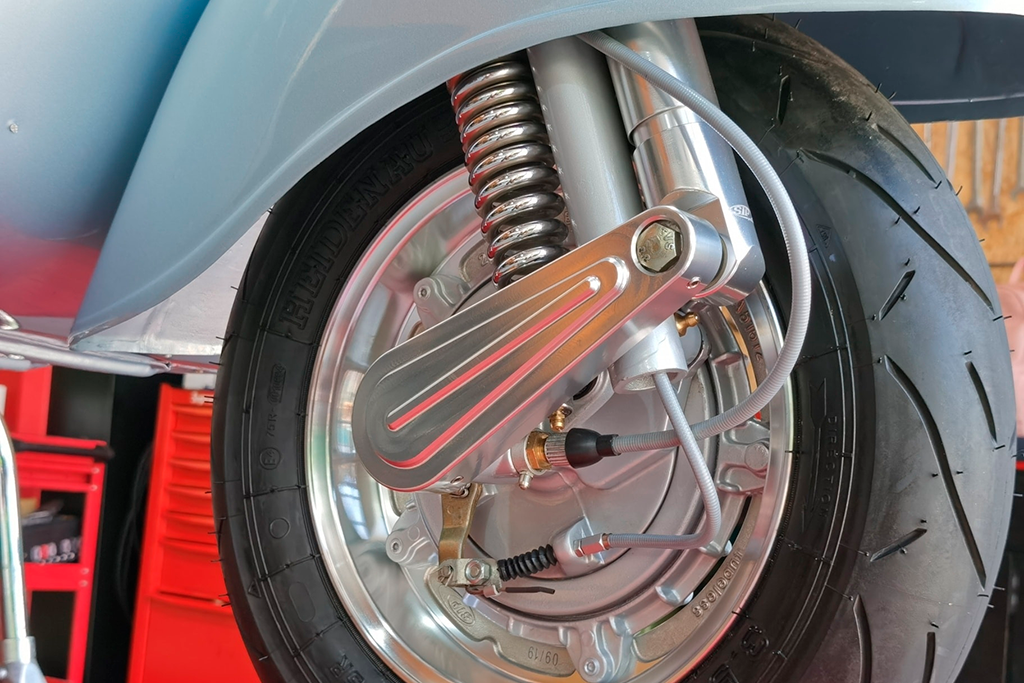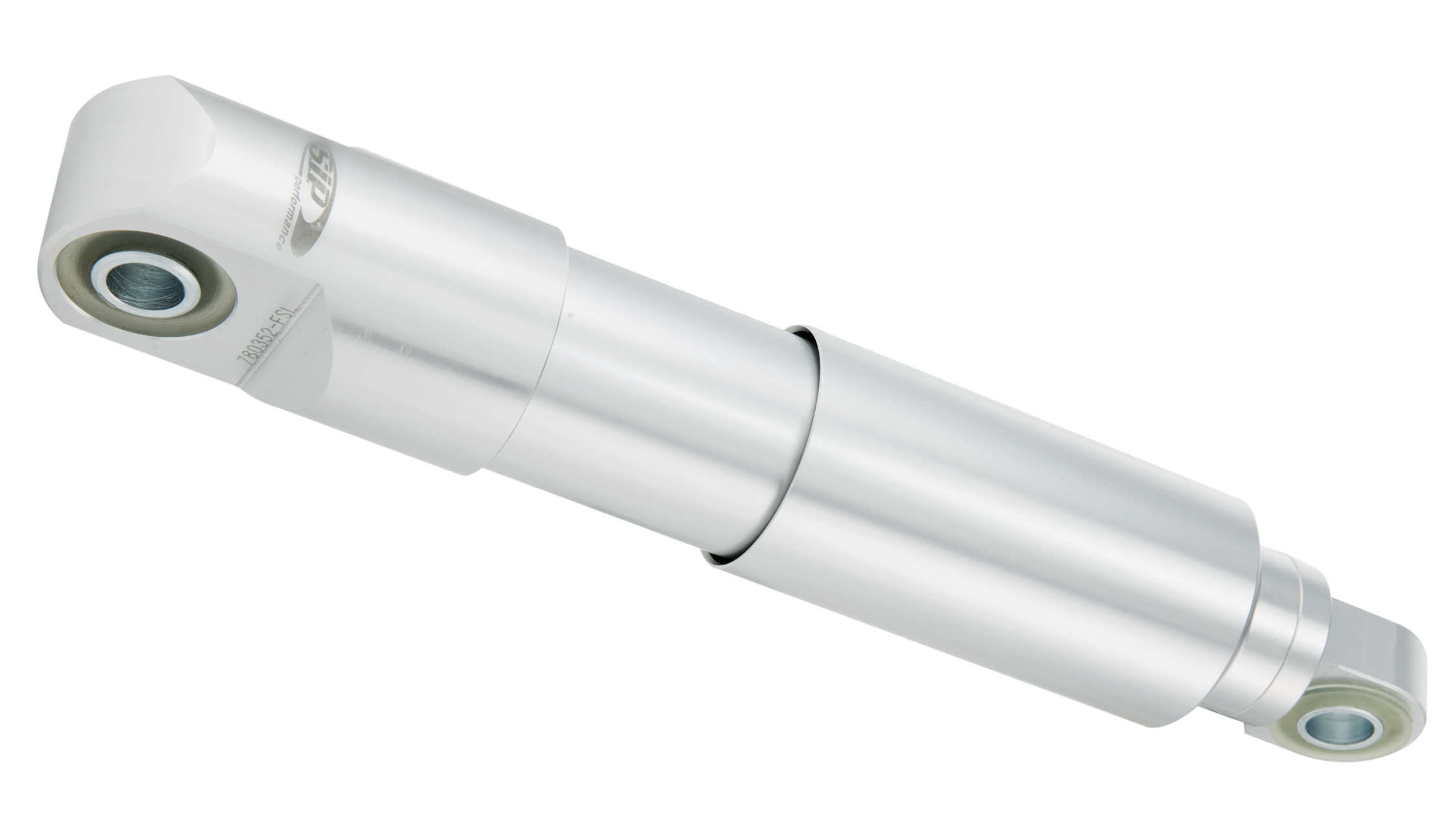It is well known that we Vespisti attach increased importance to the maintenance of safety-related parts of the scooter. But does everyone know that the shock absorbers, for example, are equally important parts in terms of safety?
What exactly does a shock absorber do?
The shock absorber is a connecting element between the body and the wheel suspension
It is always dependent on the support of the spring strut.
Therefore, both parts should also ideally be replaced at the same time when wear demands it.
When we roll or hop over an uneven obstacle in the road, the shock strut is forced to compensate for this unevenness under tension and then relax again and return to its original position. This cushioning effect is additionally mitigated by the shock absorber. The force of the shock absorber required for this can be adjusted by changing the rebound damping.
The rebound must be neither too fast nor too slow. A too fast extension movement would cause unrest in the chassis. There must be sufficient time between two successive bumps so that the tension spring is fully available again for the next obstacle. If set too hard, the tension spring would tension and relax arhythmically, sinking lower and lower and finally becoming hard. This would result in the tire losing its contact and grip with the road surface.
The better the quality of the shock absorber, the more adjustment possibilities there are
That doesn’t really make things any easier. On the contrary, this is physics at it’s best. Don’t worry, we’re not doing a physics lesson now, because roughly speaking, two standard settings are quite sufficient:
- Spring preload
- Rebound damping
For advanced users:
Further, more precise results can be achieved via compression damping adjustment.
Now comes something for the Vespa experts:
the double compression stage. Since this would rather bore us “normalos”, we’d rather leave it out of this section. This topic is sufficient for a separate treatise, for the “do-it-yourselfers” among us. Soon to be read here with us.
Anyone who is confident and willing to take on the time-consuming task of assembling the kit themselves should understand how the functions and various adjustment options are interrelated before purchasing a new strut/shock kit.
Instead, we would like to dispel one of the many Vespa myths:
A hard-tuned chassis is sporty and makes the most driving fun
This statement is short and to the point: nonsense
Now what does that have to do with the shock absorbers? A lot!
It is easy to imagine how a scooter rider rumbles over cobblestones and sees the road environment twice (if this sounds familiar to you, the chassis was or is incorrect, or at least not optimally adjusted).
Every tire needs good contact/grip with the respective road surface and the opportunity to effectively compensate for unevenness. This can only be achieved with an optimally adjusted chassis. Perfect tuning of the chassis is best achieved by a professional, such as an authorized Vespa dealer.
Such a dealer – which is more than just an online store, because it employs a large number of specialists – would be: Sip-Scootershop in Landsberg, Bavaria
The receptive staff is happy to welcome any visitor who drops by on a trip to the south of GGermany. Promised, it is worth it.
Buying shock absorbers
This is – who is surprised – a question of willingness to invest.
The current flagship shock absorber is the SIP series:
Performance, CNC aluminum shock absorbers.
These are available as a kit, equally suitable for front and rear. They are state of the art and fit for:
GTS, GTS Super
GTV
GT, GT 60
GT L 125 – 300 cc (’03-’13/’17-)
There are numerous shock absorber and strut kits on the market, both front, rear and front & rear (kits).
Mentionable brands for Vespa shock absorbers are:
- BGM PRO SC/F16, suitable for Vespa P80-150X/P200E/PX80-200E/Lusso/’98/MY/’11/T5L 255 mm
- Malossi RS24 Vespa GT, GTS, GTV, Sprint, Primavera
- Piaggio Vespa GTS, GTS Super, GTV, GT, GT60, GT L 125 – 300 cc (’03-’13/’17-)
Conclusion
As in so many areas of Vespa maintenance or a tuning, we also recommend that you call in a specialist or commission the workshop for the safety-relevant shock absorbers/struts. Saving money in the wrong place could not only be counterproductive, but also quite dangerous. We learn time and again that driving safety is closely linked to driving pleasure. But who am I telling that. After all, we Vespisti all know:
No safety, no riding fun




